The case of Ho -v- Adelekun [2021] UKSC 43 confirmed whether a Defendant in a QOCS case was able to set off cost orders in its favour against Costs Orders made in favour of a Claimant.
The claim involved an RTA where the Claimant was the innocent party. The claim settled by way of a Part 36 entitling the Claimant to both damages and costs payable by the Defendant. However, the Claimant thereafter went on to argue the basis of the assessment and lost. The Claimant’s costs amounted to £17,600.00 whereas the Defendant’s costs of the appeal amounted to £48,600.00 – the Claimant was ordered to pay these costs.
The Claimant thereafter sought to argue the she was afforded the protection of the QOCS regime, which did not allow the Defendant to enforce their costs beyond the Claimant’s damages and interests (as per CPR 44.14(1)) and, as a result of the case of Cartwright -v- Venduct Engineering [2018] 1 WLR, (which held that if a case settles by agreement, there is no “order for damages and interest made in favour of the Claimant”) there was nothing from which the Defendant’s costs could be subtracted from.
In response, the Defendant sought to set off their costs against their liability to pay the Claimant’s costs before the Defendant’s offer.
The Supreme Court unanimously allowed the Claimant’s appeal and held that Costs Orders made in favour of the Claimant should not be taken into account when determining the limit up to which the Defendant may enforce a Costs Order in their favour.
Put simply, this means that if the Claimant recovers costs and damages by agreement and has a Costs Order made against them (for any reason) the Defendant cannot retain any of that money to pay its own costs.
Interestingly, at paragraph 9 of the Judgment, the Court expressed their dissatisfaction at the issue having to be decided by the Courts and stated;
“The very fact that two eminently constituted Courts of Appeal have differed profoundly over the interpretation of a provision of the CPR suggests that there must be an ambiguity which practitioners need to have sorted out. The CPRC exists for the purpose of keeping the CPR under constant review. It is better constituted and equipped than is this court to put right such ambiguities, all the more so where, as here, the outcome is suggested by both parties and by the Association of Personal Injury Lawyers (“APIL”), intervening, to have potentially profound policy consequences for the maintenance of a reasonably fair and level playing field in PI litigation, something which this court is much less well equipped than is the CPRC to assess.”
The full Judgment can be read here.
If you have any questions regarding this summary case law please contact Karl Robson here


